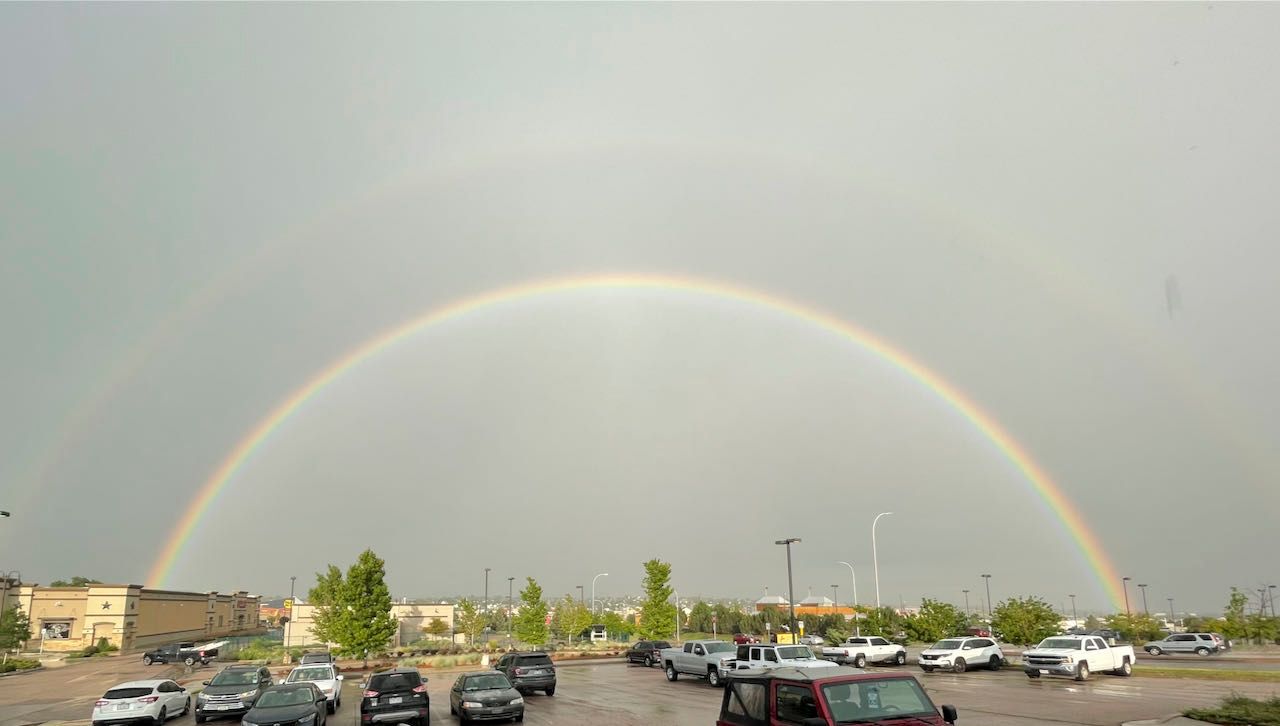Rainbows
Not just another pretty face.

Rainbows are a familiar atmospheric phenomenon but, aside from being beautiful to behold, there’s no pot of gold at the end. Rainbows are, however, a gold mine of information about the state of the atmosphere.
According to Gunther Können in an article in the American Meteorological Society’s Weather Band bulletin, rainbows reveal information about the shapes, sizes, and composition of airborne particles.
Rainbows form when the sun shines through water droplets in the atmosphere and the light is broken into its color components. A rainbow will appear at a 45° angle centered on the anti-solar point—the point that is directly opposite the sun from the viewer’s perspective. So the sun must be behind the viewer’s head.
The rainbow’s roundness comes from the spherical drops that are reflecting light. If heavy water droplets are flattened by aerodynamic forces, the rainbow will be flattened.
Rainbows generally exhibit a primary rainbow, the brightest one, and a secondary, dimmer rainbow. Researchers have discovered there can be as many as five secondary rainbows. The secondary rainbow appears a few degrees outside the primary rainbow and, since it is a reflection of the primary rainbow, the color sequence is reversed. In addition, there is an 8°-wide region between the two rainbows that is the darkest part of the sky. This is known as Alexander’s dark band, after Alexander of Aphrodisias, who first described it. The photograph above was taken in northeastern Colorado Springs on July 3rd, 2021, showing a prominent primary rainbow and it's dimmer secondary with the dark region in between.
The science of rainbows is also being used to evaluate atmospheric conditions on other planets, Venus being a prime example according to Können. Researchers discovered a rainbow in Venus’ atmosphere and analyzed it to determine the size of droplets there.
For a fascinating look into the dynamics and physics of rainbows, check out this website.
For AMS Weather Band members, the full article, All the Colors of the Sky: Decoding Rainbows, Halos, and Coronas can be read here (login required).
